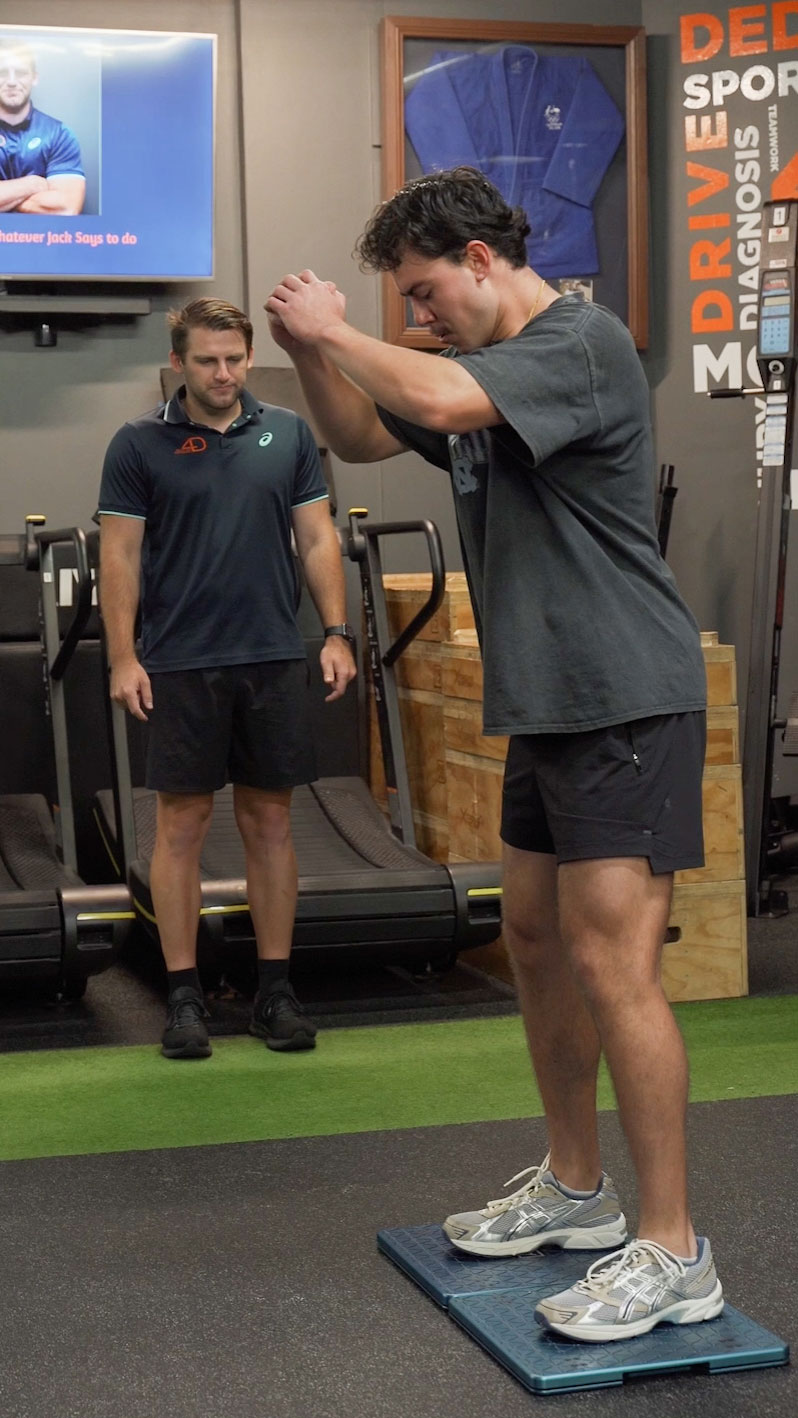
Understanding the Elastic Utilisation Ratio (EUR): Benefits for Program Design, Performance, and Injury Prevention
By Domenic Nasso - Exercise Physiologist
When it comes to enhancing an athlete’s performance, coaches and sports scientists continually seek metrics that provide insight into how an athlete moves, recovers, and generates power. The Elastic Utilisation Ratio (EUR) is an often overlooked yet critical metric. This ratio measures how effectively an individual can harness elastic energy in their movements and plays a crucial role in program design, performance enhancement, and injury prevention. Here’s an in-depth look at the EUR, how it’s measured, and why testing it can help unlock your potential while staying injury-free.
What is the Elastic Utilisation Ratio (EUR)?
The Elastic Utilisation Ratio (EUR) measures how effectively an individual uses elastic energy stored in muscles and tendons. When we perform a movement, such as a jump or sprint, it engages the stretch-shortening cycle (SSC). Simply put, during this cycle, the muscles and tendons store elastic energy as they stretch and release it when they contract. Those who have a high EUR can produce powerful movements more efficiently by relying on this stored energy, rather than just a muscle contractile force, allowing them to perform with less fatigue and faster recovery times.
In practical terms, EUR can be measured by comparing two types of movements:
- Countermovement jumps (jumps with a preparatory dip or eccentric movement)
- Non-countermovement jumps (jumps from a static squat position without a prior dip)
The difference in performance between these two types of jumps reveals how well an athlete utilizes elastic energy. A high EUR indicates effective elastic utilization, while a lower EUR suggests there’s room for improvement in storing, releasing and controlling elastic energy.

Why Test the Elastic Utilisation Ratio?
Testing EUR offers unique insights that can shape individualized training programs, enhance performance, and reduce injury risks. Here are the primary benefits:
1. Optimised Program Design
EUR can inform how to balance and prioritise plyometric, strength, and stability exercises in their program. Those with high EUR typically rely on their SSC and may benefit more from strength training to complement their elastic capabilities. Conversely, individuals with lower EUR might require more plyometric and stability exercises to improve their ability to harness elastic energy. By knowing the EUR:
- High-EUR individuals: Can be given exercises that focus on maximum strength development, improving force output to complement their already strong SSC.
- Low-EUR individuals: May focus more on plyometric and stability and reactive drills to improve SSC efficiency, enhancing elastic energy storage and release.
This tailored approach allows coaches and practitioners to design programs that meet an athlete’s specific needs, improving efficiency in training and enhancing targeted physical adaptations.
2. Enhanced Athletic Performance
Understanding EUR can directly influence performance in sports where rapid, explosive movements are key, such as running, sprinting, jumping, and cutting. Individuals with a well-developed SSC can perform movements with less energy expenditure, leaving them fresher for longer and enabling faster recovery between efforts improving efficiency. For example:
- Reduced Fatigue: By improving EUR, individuals can utilise stored elastic energy instead of solely relying on muscular effort, conserving energy for the later stages of performance.
- Increased Power Output: Training to optimise EUR can enhance explosive power in movements like jumps or sprints, translating to quicker acceleration and greater vertical leap.
- Consistency: Those who effectively utilise elastic energy tend to perform with more consistency, as they’re better equipped to handle repeated explosive movements.
3. Injury Prevention and Longevity
Injury prevention should be a critical aspect of any training program, and the EUR can reveal potential risks based on how force is generated. Lower EUR often indicates a reliance on muscular contraction alone, increasing the risk of muscle strain and joint wear. By improving EUR through SSC-focused exercises, coaches can reduce these injury risks.
- Lower Muscle Strain Risk: When a body can effectively utilise stored elastic energy, muscles are less strained during explosive movements. This means a reduced risk of acute injuries such as hamstring or Achilles strains.
- Improved Joint Health: High-impact movements, especially on the knees and ankles, benefit when elastic energy helps absorb and transfer force. Those who can spread the load between muscles and tendons may experience less joint-related wear over time.
- Balanced Muscular Development: An understanding of EUR enables coaches to create a balanced approach to strength and elasticity training, ensuring an individual is not overly dependent on one form of force generation. This balance can prevent chronic issues associated with muscle imbalances.
How to Measure and Train for EUR Improvement
Measuring EUR typically involves jump tests, as discussed. Coaches may also use motion-capture systems, force plates, or wearable devices to measure SSC efficiency in other movements beyond jumps.
Once EUR is assessed, an individual can train to enhance their elastic utilisation through:
- Plyometric Exercises encompassing a variety of jumps, hops and bounds to train reactive power.
- Heavy Strength Training to build foundational muscle strength, particularly in those with an already high EUR.
- Explosive Compound Movements including sprints and Olympic lifts to refine the SSC.
The Elastic Utilisation Ratio (EUR) is a powerful metric that allows coaches and practitioners to create well-rounded, individualised training plans. By testing and understanding EUR, we can design programs that maximise efficiency, boost performance, and reduce injury risk. As research into sports science continues to evolve, the importance of metrics like EUR will only increase, offering a clear path for those looking to optimise every facet of their training.
So, for coaches, practitioners, and athletes alike, understanding and implementing EUR-focused assessments could be the next step in achieving peak performance and resilience.